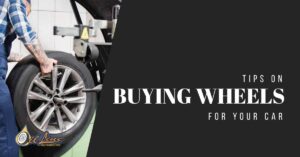How do you know when you should repair instead of replace your shocks? Even under normal driving conditions, these shock absorbers will undergo a tremendous amount of stress and rapid movement, which eventually starts to cause wear. Signs of failure will generally become noticeable at around 50,000 miles, depending on road conditions, vehicle performance and driving style. When this happens you can either replace or repair the shocks, and the latter option is less expensive. In this article, we’re going to cover the advantages and disadvantages of such repairs, and the situations in which it is recommended.
What are the pros and cons of shock repair?
We’ve already mentioned that there is a price advantage to repairing worn shocks rather than replacing them. It is also more environmentally friendly, since during replacement, the damaged shocks have to be discarded. If the shocks are nowhere near the end of their life cycle, repairs are the way to go, with replacement being the better option when they are nearing the end of their recommended use.
Replacement becomes more viable in situations where the shocks are badly damaged. In this case, the price difference will shrink to where it is no longer financially viable to go with a repair service. Finally, you have time and expertise considerations. A repair service is more time-consuming and it requires more in-depth mechanical knowledge for certain components.
What are signs and symptoms of bad shocks or struts?
To start, service recommendations state that you should not repair shocks unless they have done less than 35,000 miles. Otherwise, you want to go with a shock and strut replacement service.
One sign of trouble is that the car ride feels like you are on a perpetual bumpy road. When you have excessive bouncing, and the ride comfort is very low, it is a clear sign that the shocks are in need of repairs.
Another one of these shock absorber symptoms that you need to look out for is leaking fluid. If your shocks, strut assembly, or other components are covered in oil, it is a sign that the shock seals may be broken and that you may need to go forward with a shock absorber rebuild service.
You then have uneven tire wear that is caused by loose shocks and worn pistons. Other noticeable signs related to this issue include poor steering response, and the steering wheel not being centered. Uneven wear may also be caused by completely broken shocks.
You will also notice poor performance on your braking system as one of the shock absorber symptoms. Broken shock absorbers cannot keep the tires stuck to the road, and as such, braking becomes impaired.
Rear squats and nose dives may also become noticeable during acceleration and braking, depending if you have rear or frontal broken shock absorbers. Similarly, the car may sway excessively during corners with a noticeable body roll when the side shocks are too worn out.
How to carry out shock absorber repair?
Sometimes you do not need a complete shock absorber rebuild – only certain key components are damaged. These could include the absorber mount, seal, piston, bushing or other components. These components can either be fixed or replaced. Some broken shock absorbers can be fixed DIY while others will require specialized tools and knowledge. If you feel comfortable and are familiar with how shocks are built, you can purchase a shock absorber rebuild kit, and follow these steps:
- Find a flat, solid surface, and lift up the vehicle using a car jack.
- You then want to remove the shock and take it apart in order to check the various key components and drain the oil.
- If you do not notice any issues right away, clean the components and let them dry before checking them again.
- Replace any components that show signs of wear and damage. Components that seem intact do not need to be replaced. This can help you save on costs.
- Assemble the shock back together and add new oil.
- Test the new shock by applying pressure and checking to see that it springs back slowly. If it springs back quickly, you will need to reassemble it.
When should you replace shocks and struts?
A shock absorber rebuild becomes infeasible after 35,000 miles of usage, because you will repair them and shortly after replace them, and it will only end up costing more. There are also certain degrees of damage where the shocks and struts can no longer be repaired.
There are a few recommendations to keep in mind during a replacement service. You should always replace struts and shocks in pairs. If you replace the front right shock, you should replace the front left one as well. Same goes for the rear shocks. It will make for a safer ride, since both shocks will absorb bumps in the road with the same effectiveness.
If you do end up replacing the struts, you will likely need a wheel alignment as well. Strut replacement is also not a procedure that can be performed at home, since you will have to remove the coil springs which are under very high tension. This makes strut replacement a more expensive service than simple shock replacement, which will not require a wheel realignment.
Does your vehicle need a shock absorber rebuilding service?
If you notice any of the shock absorber symptoms outlined in this article, and you are below the 35,000 mile limit, you can bring your vehicle in for service and save a fair bit of money. At Oil Line Auto we offer shock replacement and repair services for vehicles of all types at competitive prices. If you would like to find out more about our services, or set up an appointment, contact us today. We have the tools and expertise needed to make sure that your vehicle is back to optimum in no time at an economic price.




